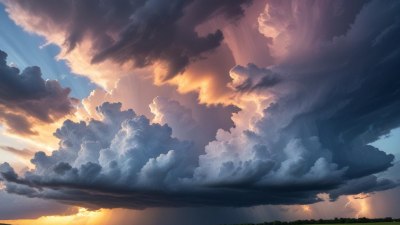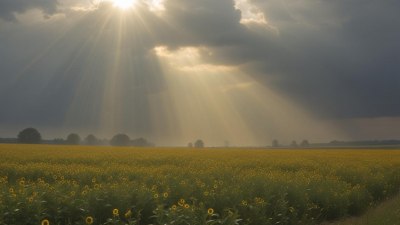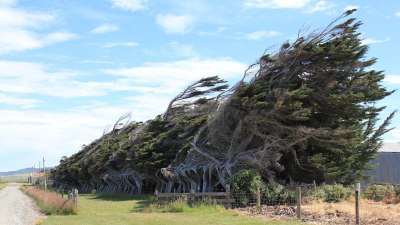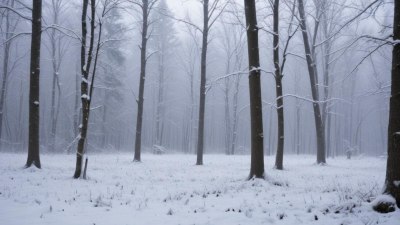Why the Sky Seems So Clear and Sharp After a Cold Spell
Explore the reasons behind crisp, clear skies following a cold spell, including atmospheric effects and science.

After a cold spell, many people notice a striking clarity in the sky, with vibrant colors and sharp outlines. This phenomenon can be attributed to several atmospheric conditions that are particularly pronounced during and following colder weather. Understanding these conditions gives insight into not only the beauty of the sky but also the science behind meteorological changes.
Impact of Cold Air on the Atmosphere
Cold air generally holds less moisture than warm air. When temperatures drop, the capacity for air to retain water vapor decreases, leading to clearer skies. During warmer temperatures, moisture in the air can lead to cloud formation, haziness, and reduced visibility. Consequently, when cold air moves in, it often displaces this moisture-laden air, leading to a reduction in clouds and thus a clearer view of the sky.
Inversions: A Key Player
A temperature inversion occurs when a layer of warm air traps cold air beneath it. This weather phenomenon often takes place after a cold front passes through. During these conditions, pollutants and particulates tend to remain close to the ground rather than being dispersed into the atmosphere. When this occurs, there can be an increase in visibility and a decrease in haziness, as the air remains still and clear above. Thus, the atmospheric inversions following cold spells enhance the brightness and clarity of the sky.
Reduction in Atmospheric Pollutants
During cold weather, there is typically a decrease in activities that produce atmospheric pollutants, such as vehicular emissions and industrial outputs. With fewer pollutants in the air, the atmosphere becomes less hazy and more transparent, resulting in a richer and sharper sky. Additionally, because cold temperatures can deter outdoor activities, less smoke and other pollutants are released into the atmosphere, allowing for clearer skies coinciding with cold spells.
The Role of Humidity
Humidity plays a critical role in the appearance of the sky. Cold air, as mentioned, holds less moisture than warmer air. When humidity levels are low, the air becomes clearer, revealing sharper details in both the atmosphere and objects on the ground. This lack of humidity also means fewer water droplets to scatter light; thus, sunlight that shines through gains a sharper quality, enhancing the sky's overall brilliance.
The Aesthetic Effects of Cold Weather
Besides scientific explanations, many people simply enjoy the aesthetic qualities of a clear sky following a cold spell. The vibrant blues and sometimes vivid lapis lazuli that can appear, particularly during sunrise and sunset, are often more pronounced when cold weather conditions are present. This striking contrast can often make for spectacular photography and artistic representation, drawing many people outside to witness and appreciate the beauty.
Why We Notice It More
Psychologically, people tend to pay closer attention to their surroundings after significant weather changes. Following a cold spell, individuals may take notice of the clarity and beauty in the sky due to the contrast with the cloudy or dreary weather often preceding it. This heightened awareness can lead to an appreciation for the subtleties of weather patterns, even in mundane observations like the everyday sky.
Crispness of Daylight
The sun appears sharper during colder days, which can be attributed to the angle of sunlight and clarity in the atmosphere. When the air is crisp and the humidity is lower, the angle of sunlight hitting the atmosphere may also contribute to the vividness of colors. The skies may seem brighter and more vibrant, infusing an invigorating quality into behaviors such as walking, hiking, and simply being outdoors.
Midday Effects
Midday can particularly showcase these effects as the sun reaches its zenith. With clear skies following a cold spell, shadows become sharper and colors pop due to the interplay of sunlight and the clean atmosphere. Photographers often find that capturing images during this time yields striking results, as the contrasts between colors tend to be more vivid and pronounced.
Creating a Clear Sky
When forecasting weather, meteorologists consider various factors that contribute to the atmospheric conditions following a cold spell. Strategies to maintain clear skies often involve monitoring temperature inversions and humidity levels. Knowing when to expect clearer conditions allows people to plan outdoor activities to enjoy the beautiful sights. Indeed, the freshness associated with cold spells can rejuvenate community spirit, as individuals take the opportunity to engage with nature.
The Broader Impact of Cold Spells
The aftermath of a cold spell and resulting clear sky can also have broader impacts, from affecting local ecosystems to influencing wildlife behavior. Many animals rely on clear skies for navigation and feeding, as the clarity of the day can lead to increased seasonal activity. Migratory birds may become more active, taking advantage of the clear skies that often accompany colder seasons.
A Tender Balance
Cold spells provide a unique opportunity to step outside and experience sharp, beautiful skies. The interplay of atmospheric conditions, including humidity, air pollution, temperature inversions, and the psychological effects of weather change, all work together to create this captivating natural scene. By understanding these factors, one can not only appreciate the remarkable beauty of a clear sky but also grow more aware of the delicate balance of the environment surrounding us. Amidst the chill, a clear sky after a cold spell serves as a reminder of nature's ability to captivate our senses and invite us to explore the world above.











